

All vacations must come to an end eventually and we closed out our time on the Big Island of Hawaii by exploring the city of Hilo and the northern coast. This area is called the Hamakua Coast and it's a rugged, sparsely-population region known for its heavy rainfall and lush jungle environment. The city of Hilo is the largest on the Big Island by population, an older settlement that lacked the up-and-coming development that we had seen over at Kailua-Kona. This was less of a tourist area and more of a city where local residents live on a permanent basis. Over the course of several days, we would be exploring some of the public gardens in Hilo, visiting underground caves and natural waterfalls, and stopping at several breaktaking points along the northern coastline of the island.

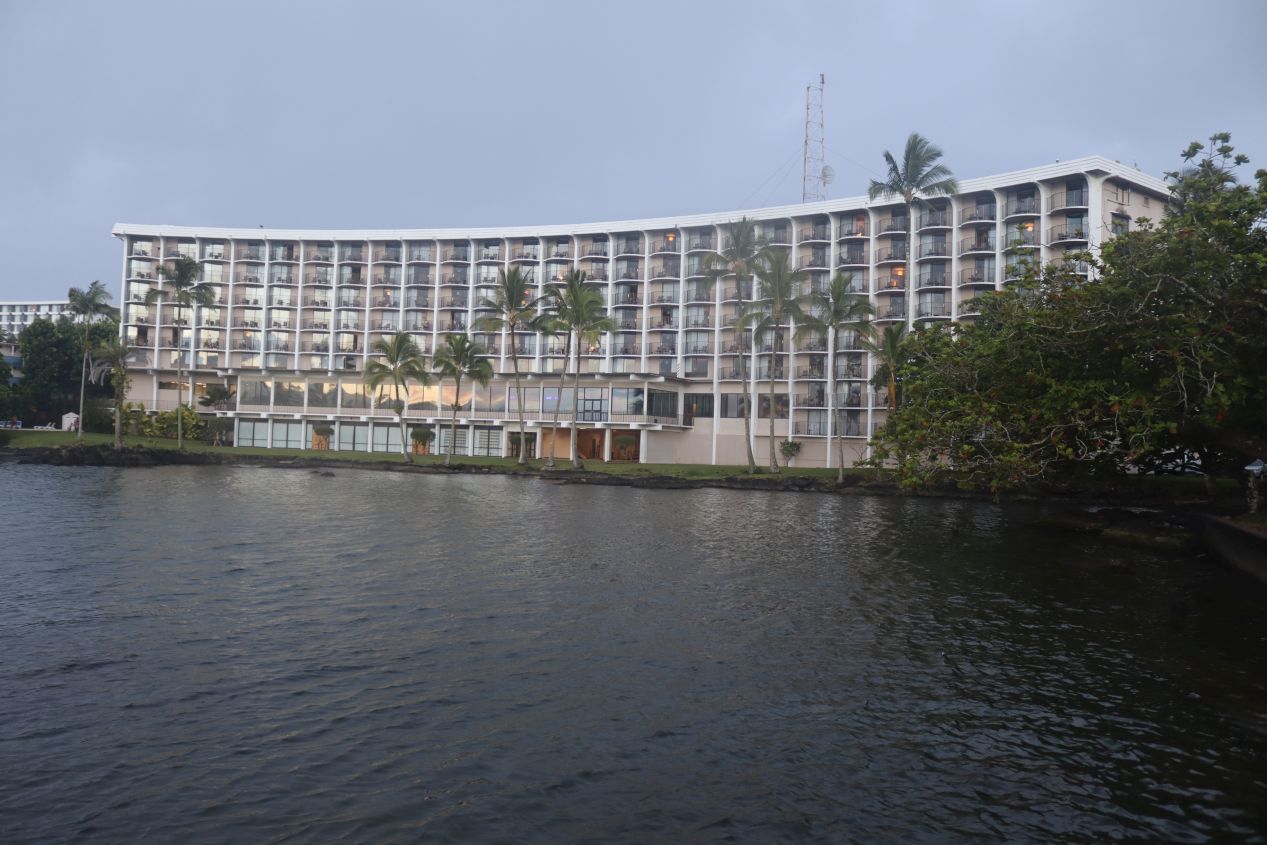


We arrived in Hilo for the first time in the late afternoon after having completed the drive around the southern edge of the Big Island from Kailua-Kona. We were staying at the Hilo Hawaiian Hotel along the waters of Hilo Bay at the northern edge of the city. There was a complex of several different hotels situated along the water here and the Hilo Hawaiian was one of the larger (and therefore cheaper) options available. It was a bit on the older side and looked like it would have benefited from a renovation to give the place less of a vibe from the 1980s. Nevertheless, this hotel turned out to be a good place to stay since it was close to all of the attractions in downtown Hilo and provided some lovely views of the waterfront. We were staying on the inland side of the hotel since it was cheaper but the restaurant located inside provided us with some excellent sunset vistas:




These pictures were taken from our second evening in Hilo when we had dinner at the "WSW" restaurant which apparently stood for Whiskey Steak Wine. The restaurant was practically deserted and we had the place almost entirely to ourselves; for that matter, the Hilo Hawaiian Hotel didn't seem to be that crowded overall. The food here was pricey but excellent with steak being the featured dish. We were able to get a window table thanks to the empty nature of the restaurant and then watched the sun setting off to the west behind the mountains in the distance. There was a walkway outside the hotel that led to a little island named Moku Ola (Coconut Island) where some teenagers were jumping into the waters of Hilo Bay. Far beyond them in the distance were the slopes of Mauna Kea where we could just barely see the little dots of the telescopes at the summit. This was pretty neat to see since I had just been up there a few days earlier.

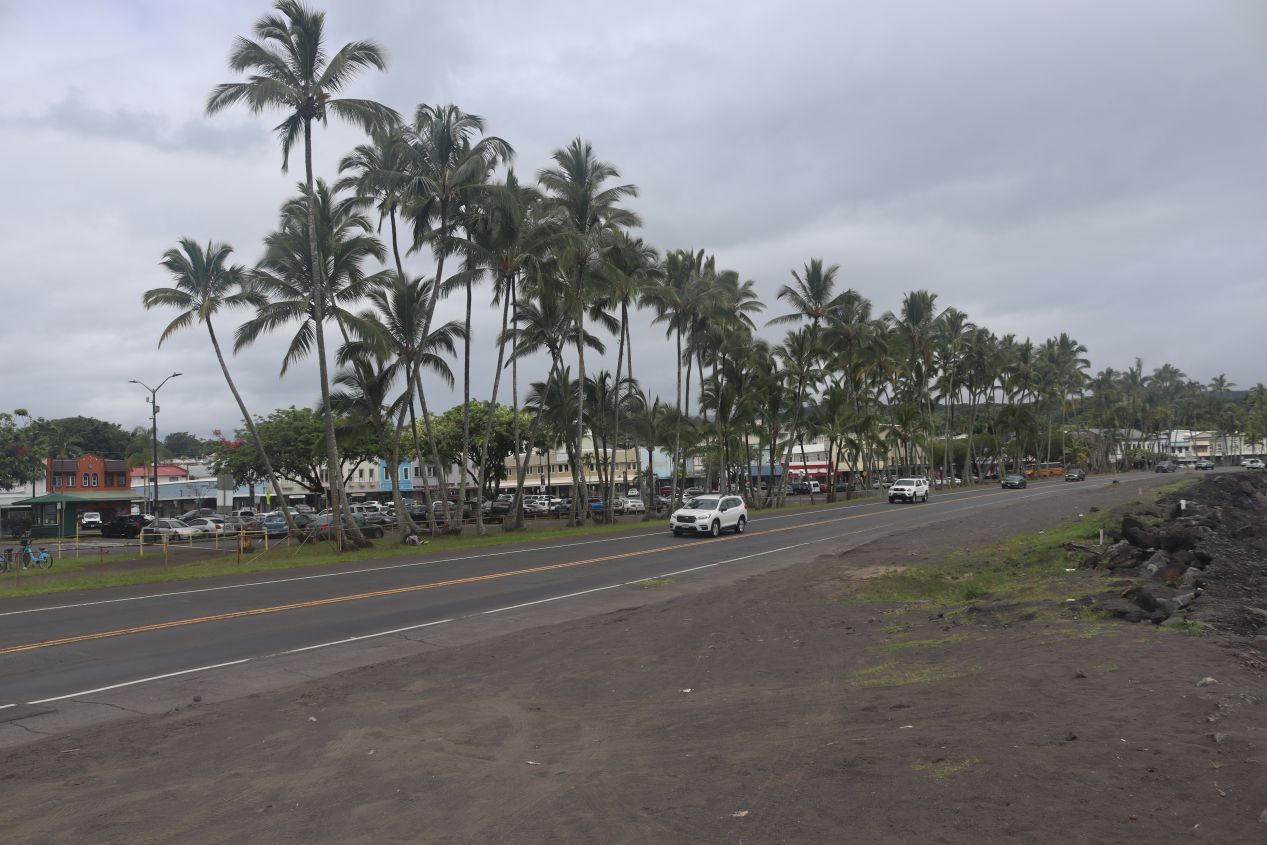


Pictured above are some images of the Hilo waterfront taken during the daytime from Bayfront Beach Park. You might notice that it's cloudy in a lot of these pictures; that's not a coincidence as Hilo is one of the rainiest cities not just in the United States but in the entire world. Hilo gets over 120 inches of rain annually and about 270 days per year feature at least some rainfall, roughly 3 out of every 4 days. This is a much older city than Kailua-Kona with a sizable population having lived here since the late 19th century. It definitely felt like an older city as well with the buildings along the waterfront having an older and somewhat rundown feel in contrast to all the new construction going up along the west coast of the island. Hilo's waterfront has had the misfortune to get wiped out by two separate tsunamis, one in 1946 and then another in 1960, each of which caused massive destruction and killed dozens of people. There's a small museum here dedicated to the tsunamis which I wish we had taken an hour of time to visit.




Speaking of the businesses along the waterfront, we ate dinner on our first night in Hilo at this restaurant named Cafe Pesto. This was one place in the city that didn't have a sleepy feeling to it and was instead bustling with patrons; we opted to sit at the bar so that we could avoid a long wait for a table. The Italian food here was really good and I think that I preferred the pizza from Cafe Pesto to the steak that I had over at WSW. Certainly this food was better when factoring in the price since it was about half the expense of the restaurant back at our hotel!

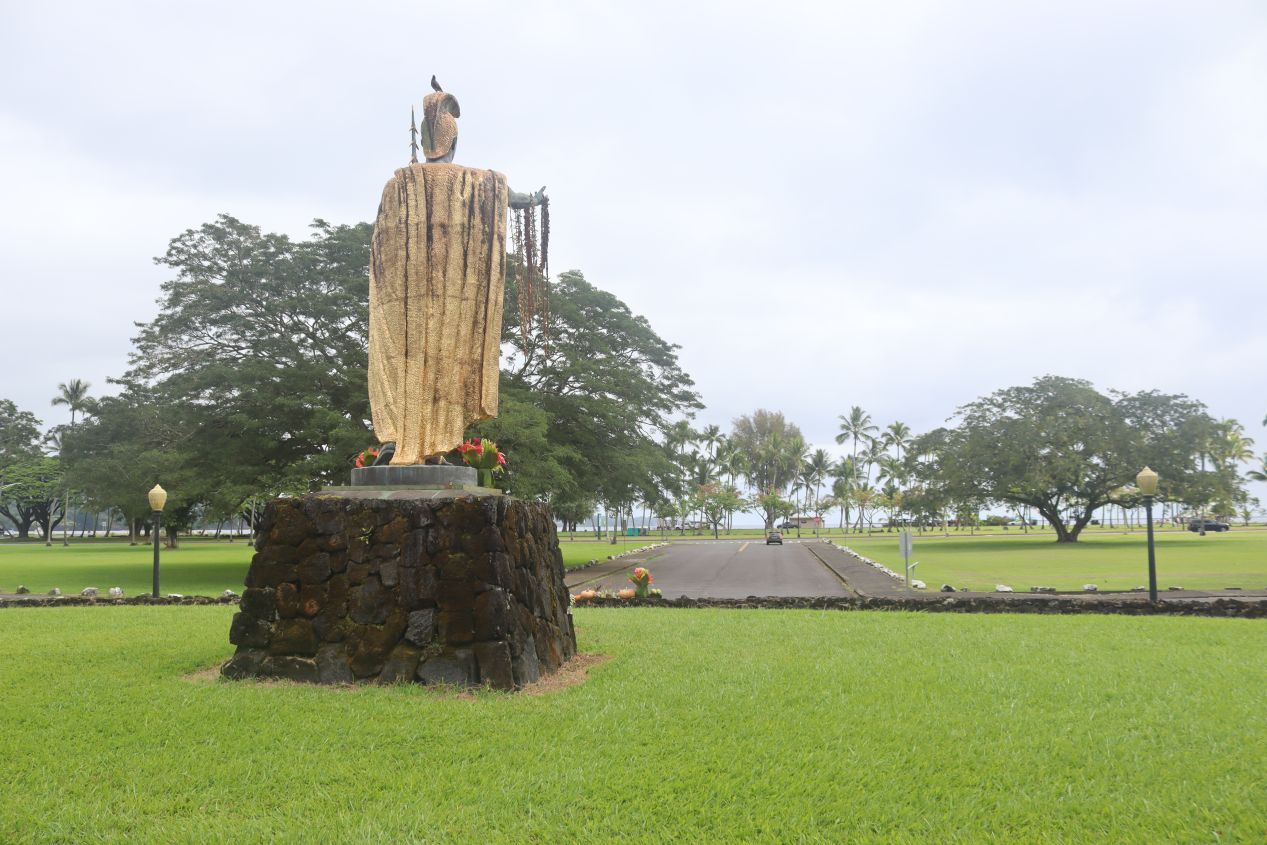


The following pictures were taken in some of the public parks scattered around downtown Hilo. These first images are from the park surrounding Waiakea Pond where the featured attraction is this statue of Kamehameha I. It's another replica of the same statue found outside the government buildings in Honolulu and also in the United States Capitol Building in Washington DC. Kamehameha was born on the western side of the Big Island but did spend a good deal of time in the Hilo area, using it as a center for ship-building as part of his project to unite the Hawaiian islands. Kamehameha remains a popular figure in Hawaii to this day and his statue had offerings of flowers and tropical fruits that locals had left in tribute to the famous king. The rest of this park contained several walking trails that wrapped around the central pond, an art center, and a Vietnam War memorial; I would have explored a bit more if it hadn't started raining.

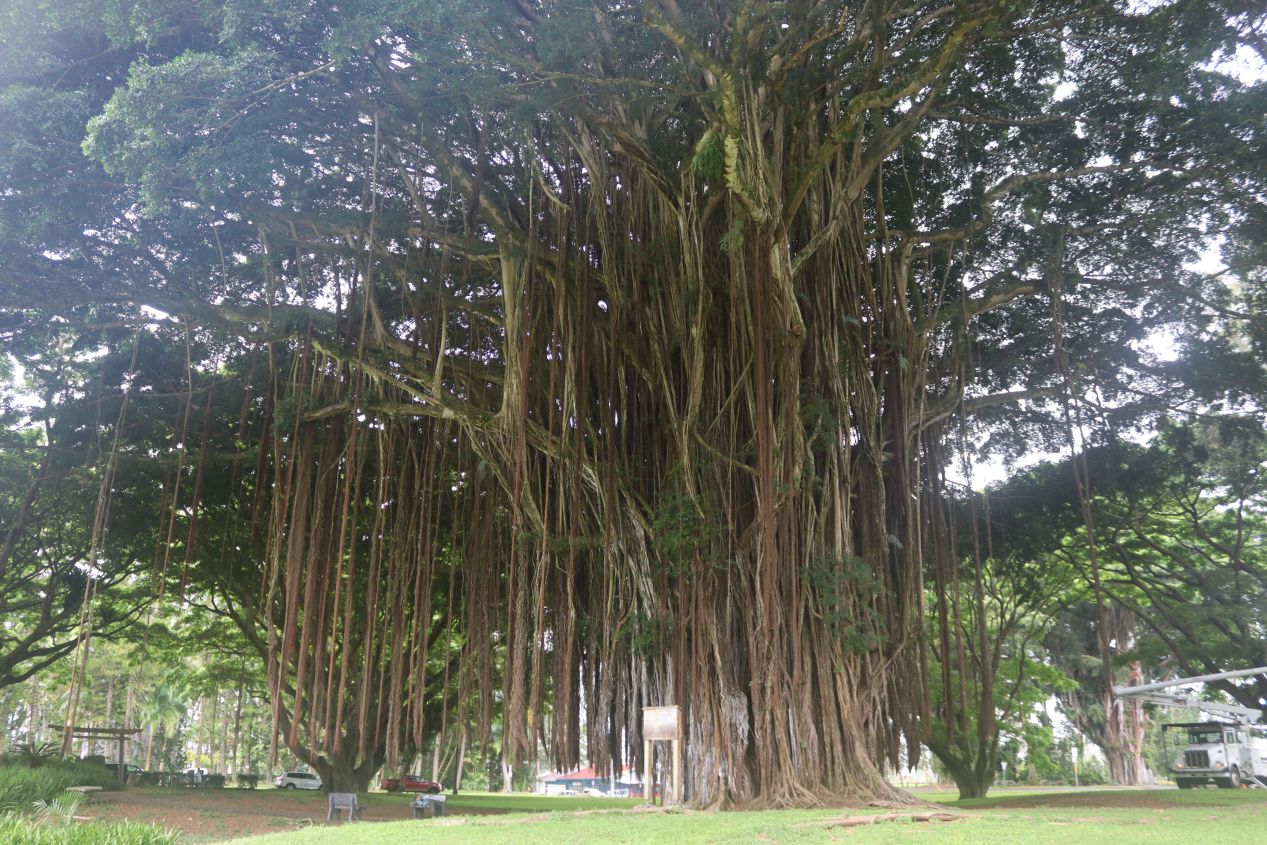


It was a short drive over to Liliuokalani Gardens named after the unfortunate last queen of the islands. The land for the park was in fact donated by the queen herself in the late 19th century and it was developed a few decades later with Edo-style Japanese gardens to reflect the large Japanese population living in Hawaii. There were pagodas and torii here mixed in with little stone bridges over the ponds. In terms of the natural scenery, the gardens featured several enormous banyan trees, which were a convenient place to shelter from the light rain falling, along with bamboo trees and a series of tropical flowers. There was a group of schoolchildren here on a field trip of some kind doing little scientific experiments and they were just adorable to watch running around. I've never been to Japan as of the time of this writing but it would have been easy to think that this park was located somewhere in the Japanese homeland.

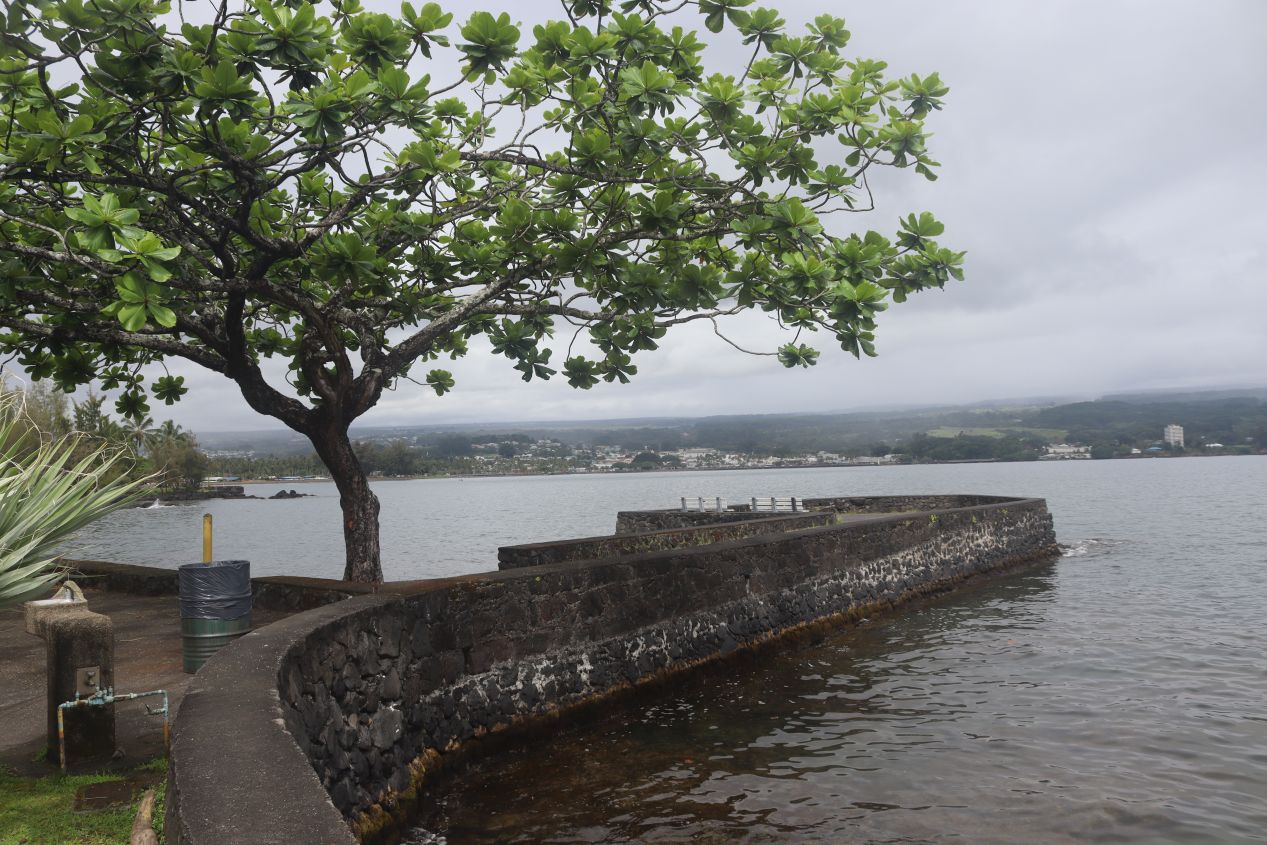


These were some images of the waterfront at the northern edge of Liliuokalani Gardens looking out at Hilo Bay. There's a massive breakwater that shelters the harbor from the rough seas off the north coast of the Big Island which is barely visible in the distance of the first picture above. We also found that there were some walking paths that ran along the coastline and which would have been quite pretty on a day that wasn't as overcast as this one. Instead, the cloud cover gave this whole area kind of a gloomy feel which wasn't really deserved.

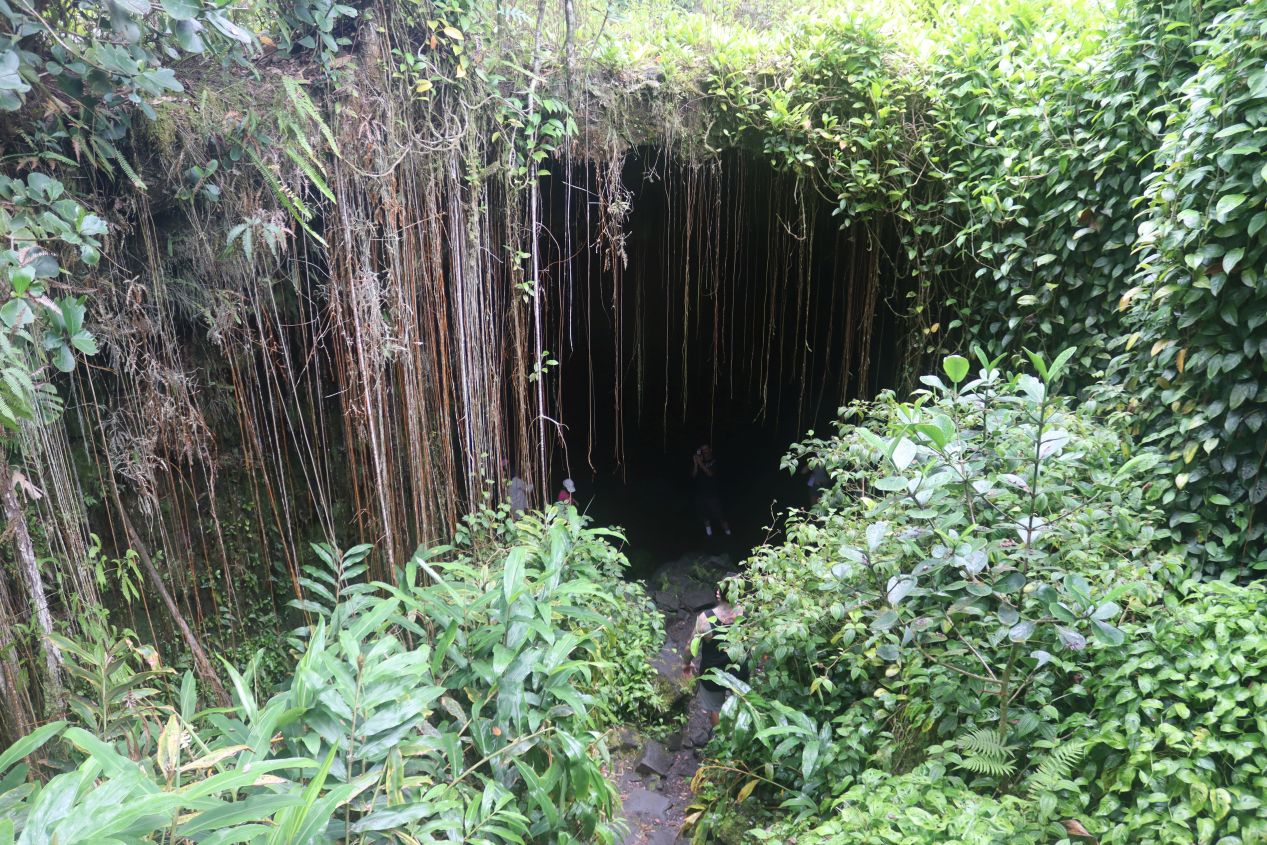


As far as activities in the Hilo area, we decided to stop at a local attraction names Kaumana Caves. These are not natural caverns at all but instead a lava tube created by a fairly recent 1881 lava flow from Maua Loa. The lava tube runs for over two miles and part of it can be easily accessed from a road that runs through the western suburbs of Hilo. Visitors can actually enter either side of the lava tube from this spot, the western half or the eastern half, each of which had its own sights to explore. Liz's pregnancy meant that she wasn't terribly interested in climbing over a bunch of rocks so I spent a little while poking around the lava tube by myself. It was completely dark inside and I was glad that we remembered to bring a flashlight to see. The western tube was smooth in many places and often tall enough for me to stand normally, then suddenly would narrow and force me to crawl through small openings. I walked for about ten minutes before turning around and heading back to the entrance again.

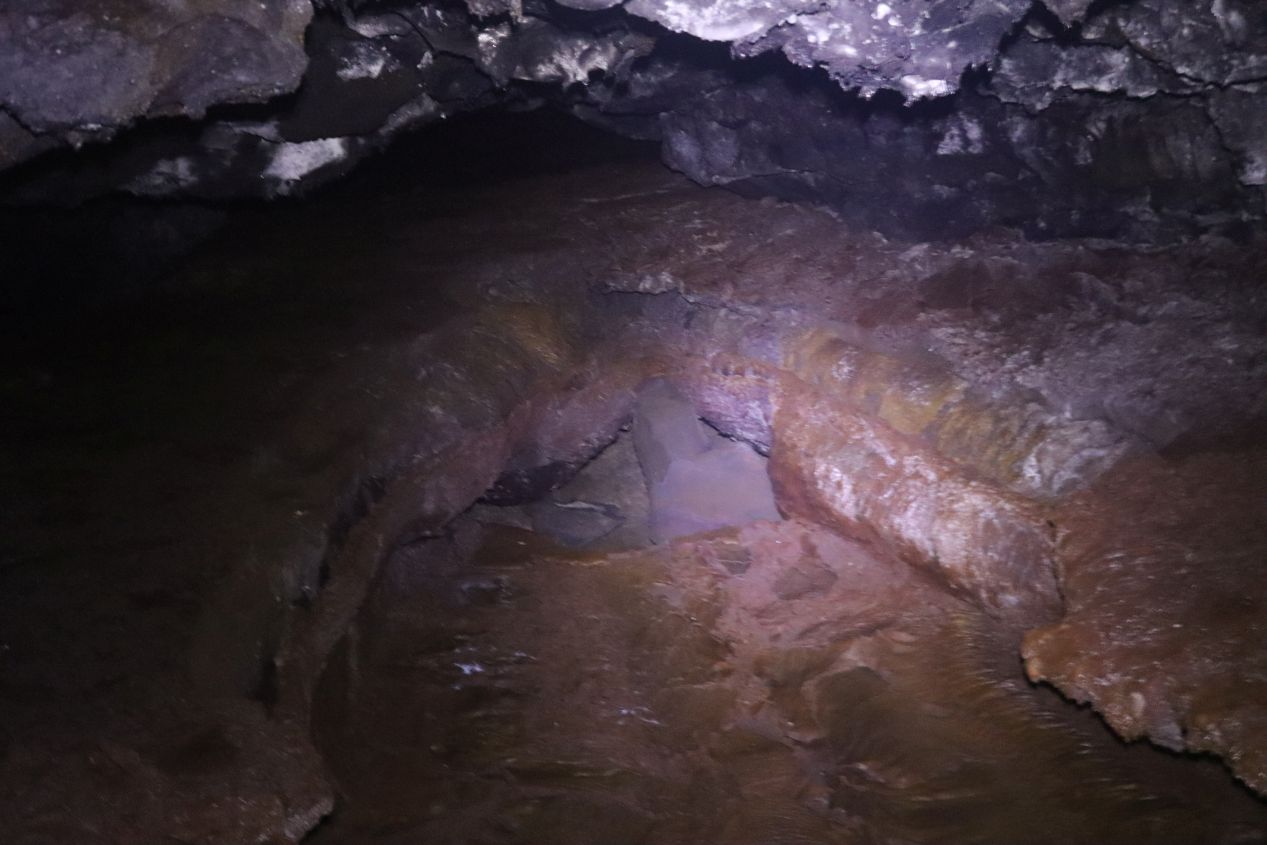


The eastern lava tube was significantly rougher, with a floor that had broken stones and a ceiling that dropped lower and lower. There were a lot fewer people exploring this side of the caves since it required visitors to stoop over and sometimes even crawl on hands and knees. I would not recommend anyone entering this part of the lava tube who dislikes confined spaces as it was a really tight squeeze at times. Anyway, I didn't want to spent too much time here because Liz was waiting outside and once again limited myself to about 10 minutes in each direction coming in and out. I would have loved to spend a whole day here and travel the lava tube from beginning to end just to see the whole thing, ideally with someone else along for the ride as it started to get a little nerve-wracking to be completely alone in the pitch dark underground.

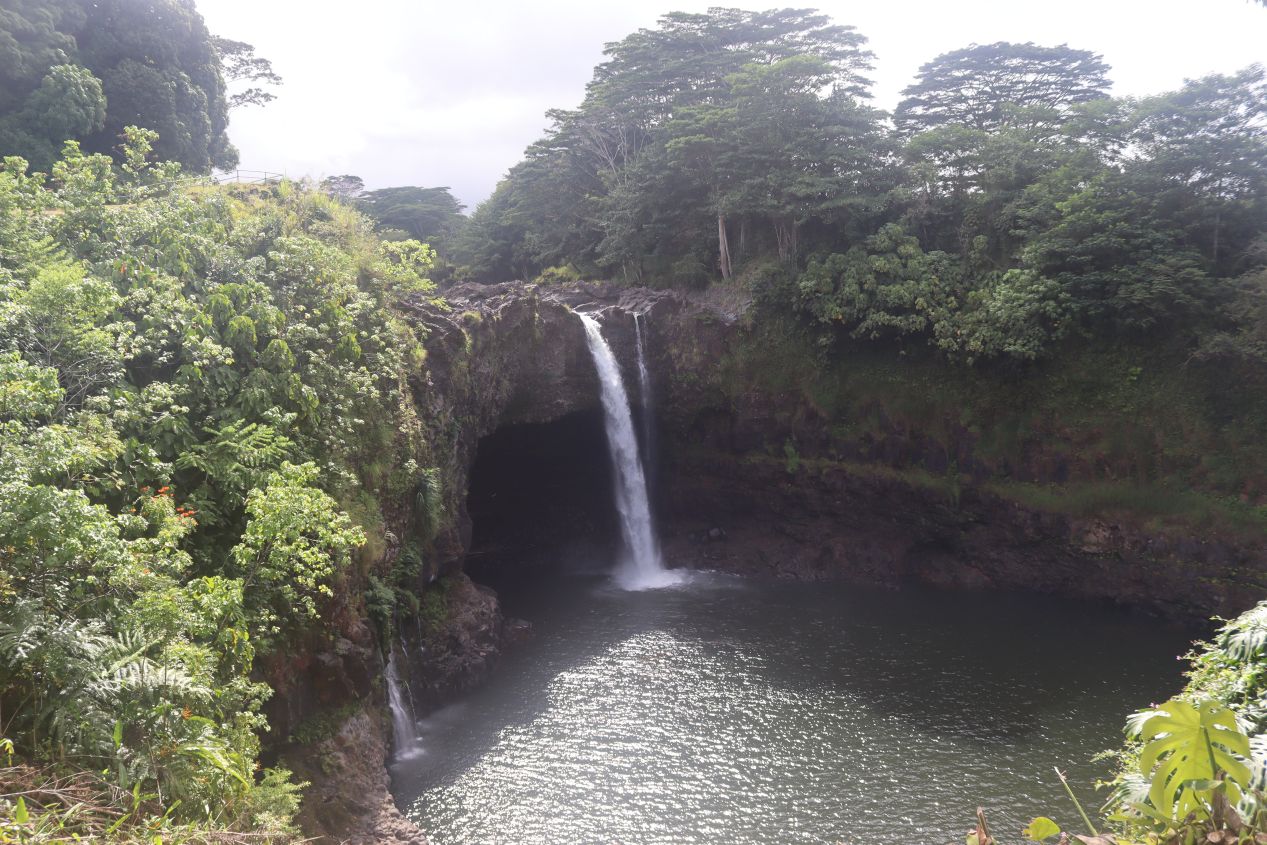


We also stopped to see this waterfall named Waianuenue or Rainbow Falls which was situated not far from Kaumana Caves. The name comes from the rainbow colors that can be seen in the mist kicked up from the waterfall although this phenomenon wasn't on display when we visited. Waianuenue Falls stands about 80 feet / 25 meters in height before plunging down into a large pool of water below. There used to be a small trail that led up to the top of the falls however it had been disappointingly closed off to visitors at the time of our trip. This was neat enough to see but there really wasn't anything to do here beyond spending a few minutes looking at the waterfall; I would say that this is something that can probably be skipped when visiting Hilo.

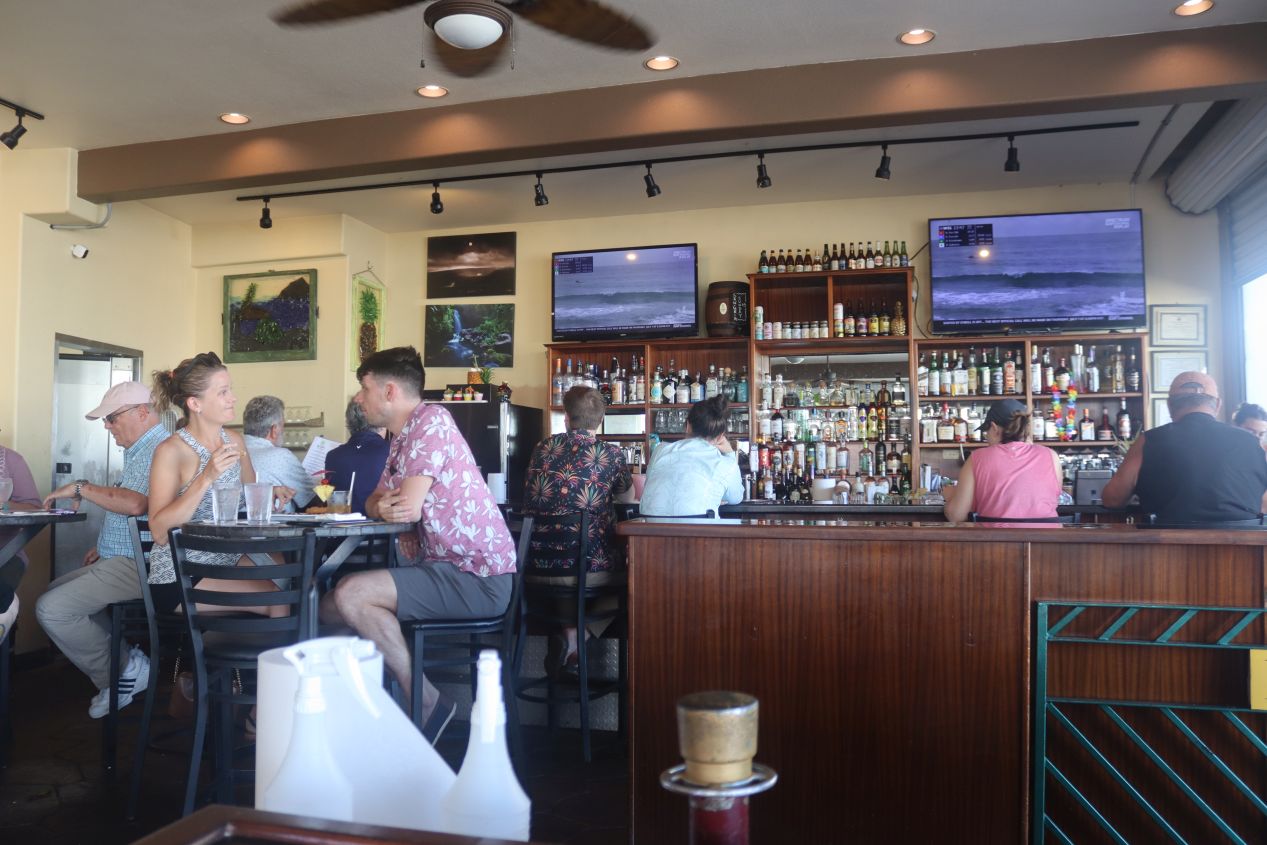


This restaturant named Pineapples was the last place where we ate dinner before leaving Hilo. It was busy enough that we had to wait for a bit even when arriving in late afternoon outside the prime dinner hours; Hilo's restaurant options were apparently limited enough that it was always crowded at dinnertime here in the tourist season. We were able to enjoy the outdoors seating while eating a pasta meal for me and this pictured dish for Liz. We also took advantage of the actual pineapples served at the restaurant to capture a picture of the little pineapple growing in Liz's stomach; this was taken almost exactly two months before our son William was born in September.
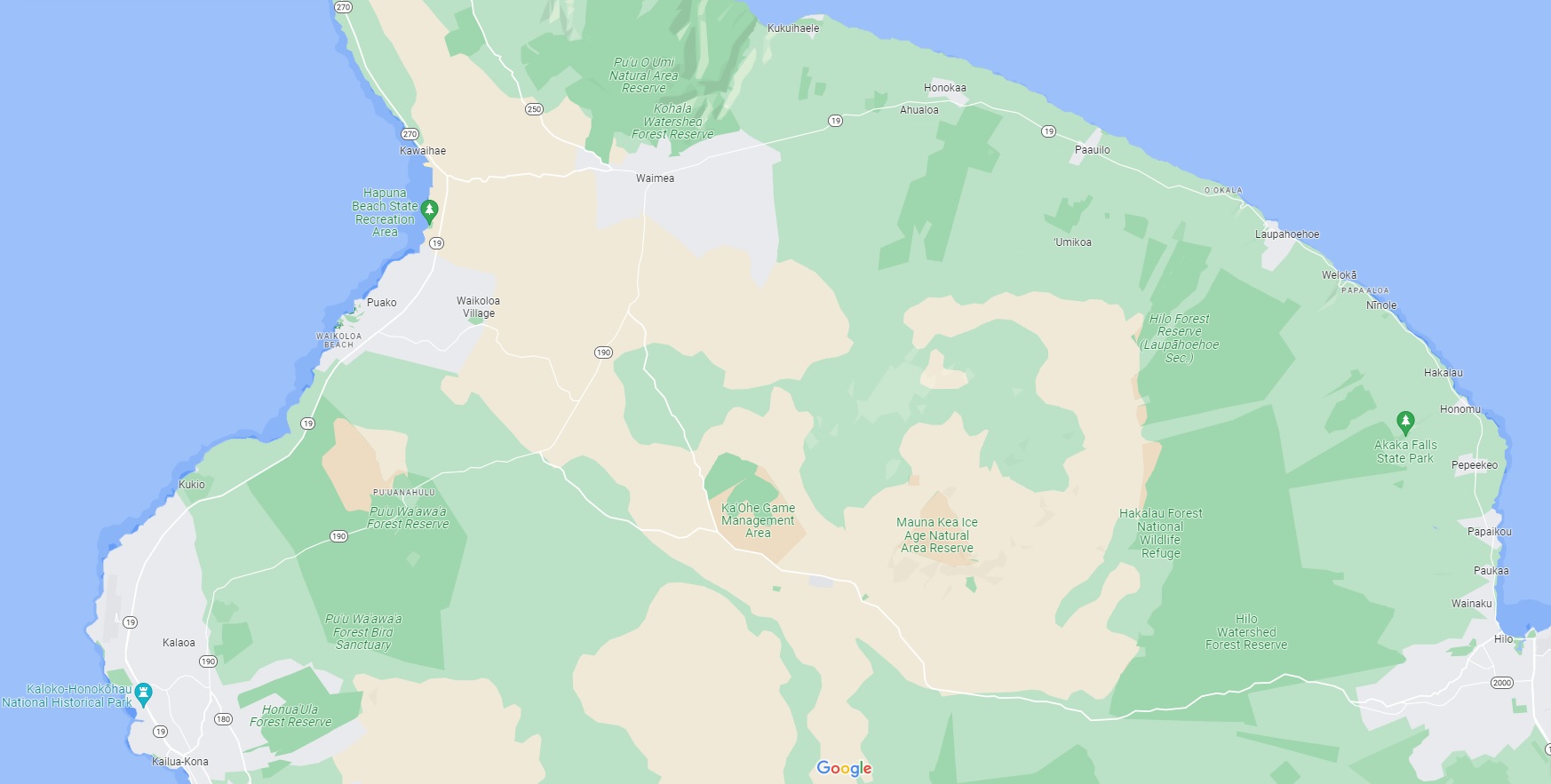


Our final day in Hawaii dawned gloriously bright and sunny, much clearer than the weather we had been experiencing for the past few days in Hilo. Our itinerary for the day involved driving along the northern coastline of the Big Island on state road 19, through the area known as the Hamakua Coast, before catching an evening flight back to the mainland out of the airport at Kailua-Kona. This route would be taking us through a series of small towns that dot the mountainous coastline along the northern slopes of Mauna Kea. We paused on our way out of Hilo to take a few additional pictures of the harbor which looked much more inviting under these sunny weather conditions. We even had a clear view of the telescopes atop Mauna Kea once again, their white colors standing out against the brown rock of the volcano.




The first stop that we made took place at Akaka Falls State Park, located a few miles inland off the main road to the northwest of Hilo. This was one of the busiest stops that we made throughout the day and the parking lot at the state park was full of cars; there was also an entrance fee to see the falls unlike most of the other places that we had visited. It was clear that this was a practiced tourist operation as arrivals were directed to walk in a counterclockwise direction along the circular path that led eventually to the falls themselves. This area was situated on the lower slopes of Mauna Kea and receives a tremendous amount of rainfall each year, resulting in a tropical rainforest environment when combined with the warm equatorial conditions of the island. There was dense greenery blanketing everything that we saw and the whole place was teeming with life. We did the first half of the walk to a lookout for Kahuna Falls but they were so carpeted with trees that the falls themselves were almost invisible. You can barely see them poking out in the fourth picture above.

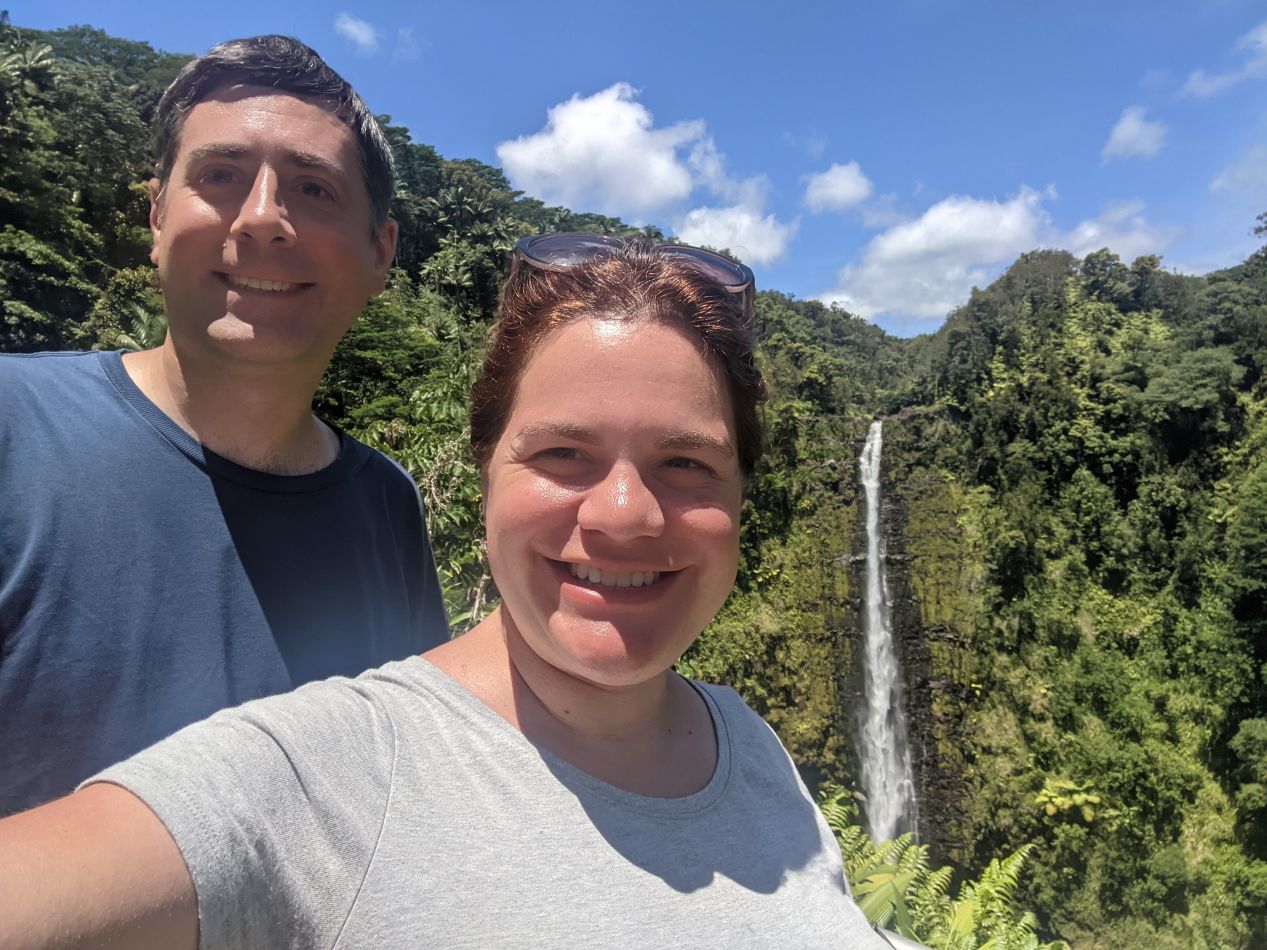


Akaka Falls themselves were much more visible with the state park having been designed around their viewing experience. This waterfall measures 442 feet / 135 meters as it plunges into a deep gorge below; it would be extremely difficult to see the falls without the walkways constructed by the park service to provide access. We paused on the viewing platform to take a few pictures of the huge waterfall and get a selfie of ourselves with the falls in the background. The rest of the walking trail continued to take us through a sea of greenery with brightly-colored tropical flowers poking through the leaves here and there. This was a fun stop to make for about an hour and definitely worth seeing even with the entrance fee charged to visit Akaka Falls. The drive itself through the tiny little town of Honomu located near the falls was enjoyable in its own right.




The next stop of the day was unplanned but simply happened to be something that looked interesting from the side of the road. We pulled off at a small costal park named Laupahoehoe Point where big waves were crashing onto these rocks and kicking up big plumes of spray. The northern side of Hawaii has a rough coastline with few natural harbors and that was certainly on display here. This felt like a wild, primal part of the coastline which had been little touched by human habitation. Laupahoehoe is a tiny community with about 500 residents clinging to the shoreline. It's most notable for having a school building near the coast which was completely destroyed in the 1946 tsunami; a small sign here at the coastal park commemorated the victims of the disaster. This was a beautiful part of the shoreline with a sad history due to that natural disaster.

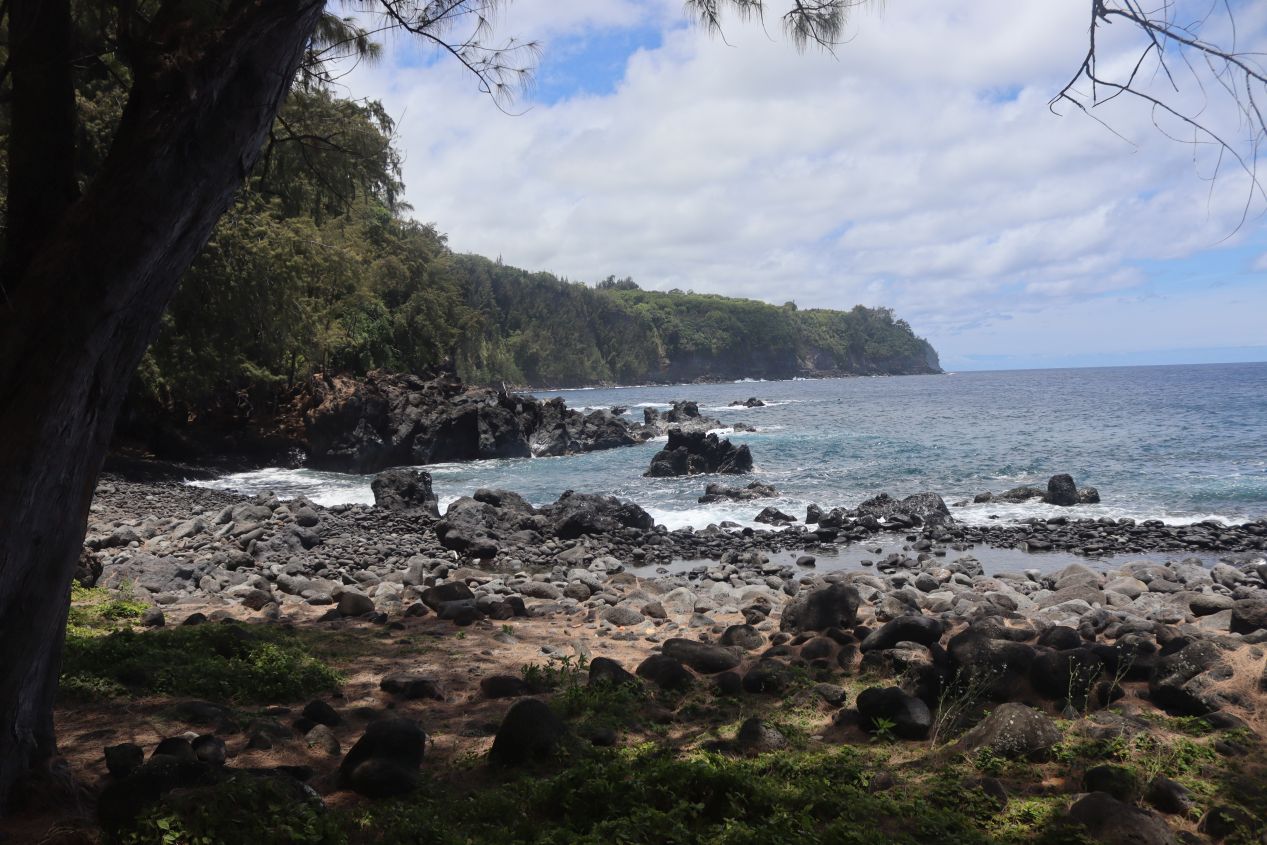


These were a few more pictures that we took while walking around the coastal park at Laupahoehoe Point. This was clearly a spot intended for local use with a little playground and an area set aside for camping, not a place intended to be a major tourist attraction. Nevertheless, it was one of the prettiest spots that we visited anywhere across Hawaii and I'm glad that we stopped here for half an hour to stretch our legs and take in the scenery. There were a couple of people putting their feet into the water here but the surf looked much too rough for swimming. I wouldn't want to try avoiding all of those rocks in the strong currents either.

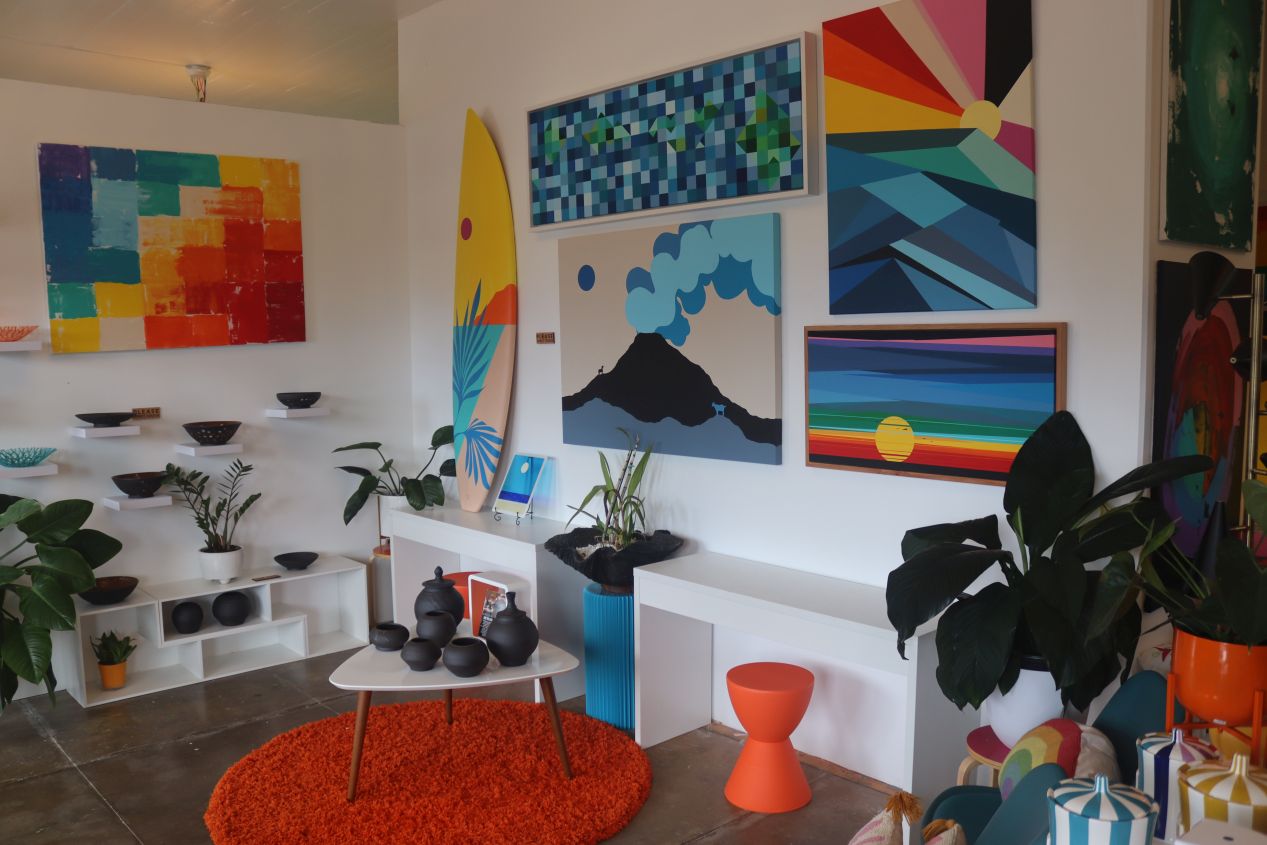


We stopped next in the historic town of Honokaa, one of the larger towns on the Hamakua Coast with about 2500 residents. Honokaa was a plantation town dedicated to the production of sugar cane for most of its existence until the Hamakua Sugar Company closed down in 1994. This plunged the local economy into steep decline which has only recently begun to rebound as Honokaa reoriented its economy towards tourism and the service industry. There were plenty of historic buildings dotting the main road in town, most notably the Honokaa People's Theatre dating back to 1930 and still showing current films as indicated by the sign advertising Top Gun Maverick. We spent some time walking up and down the two sides of the main road, visiting several of the shops that featured local artisans like the colorful prints captured above. Honokaa was a cute town and a good place to stop to check out the stores and eat a meal.

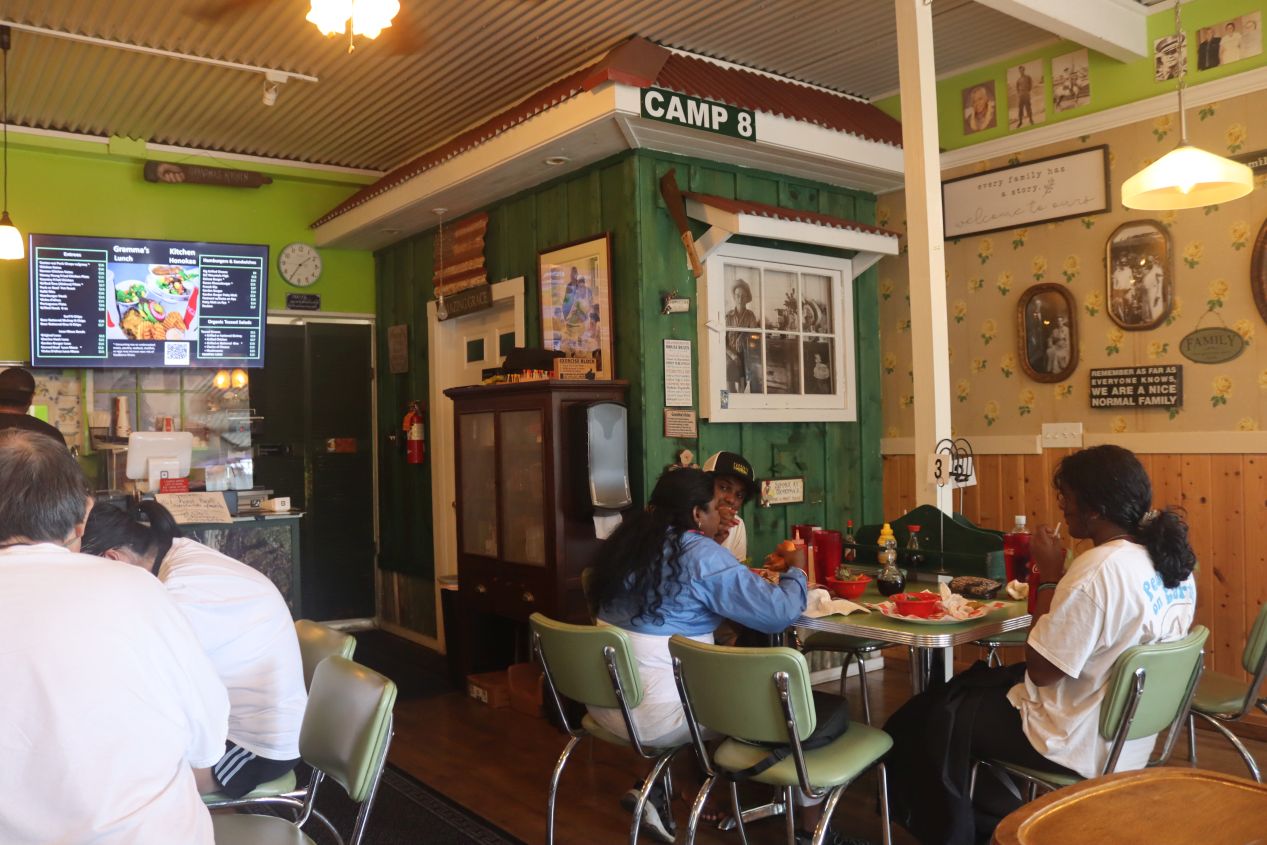


Lunch for us was eaten at this restaurant named Gramma's Kitchen which specialized in different kinds of Southern food. This place had taken over the historic Paradise Restaurant building that dated back to 1938 and which was popular with American soldiers during World War II. The restaurant had a cozy feeling inside and it quickly filled up with a lunchtime crowd; we were lucky to get a table before the place was completely full. Both of us had chicken, either fried or as part of a salad, as that was the featured item on the menu and quite tasty. Gramma's Kitchen was indefinitely closed when I checked their website at the time of this writing so hopefully they'll be able to sort out whatever is going on and reopen to the public again.

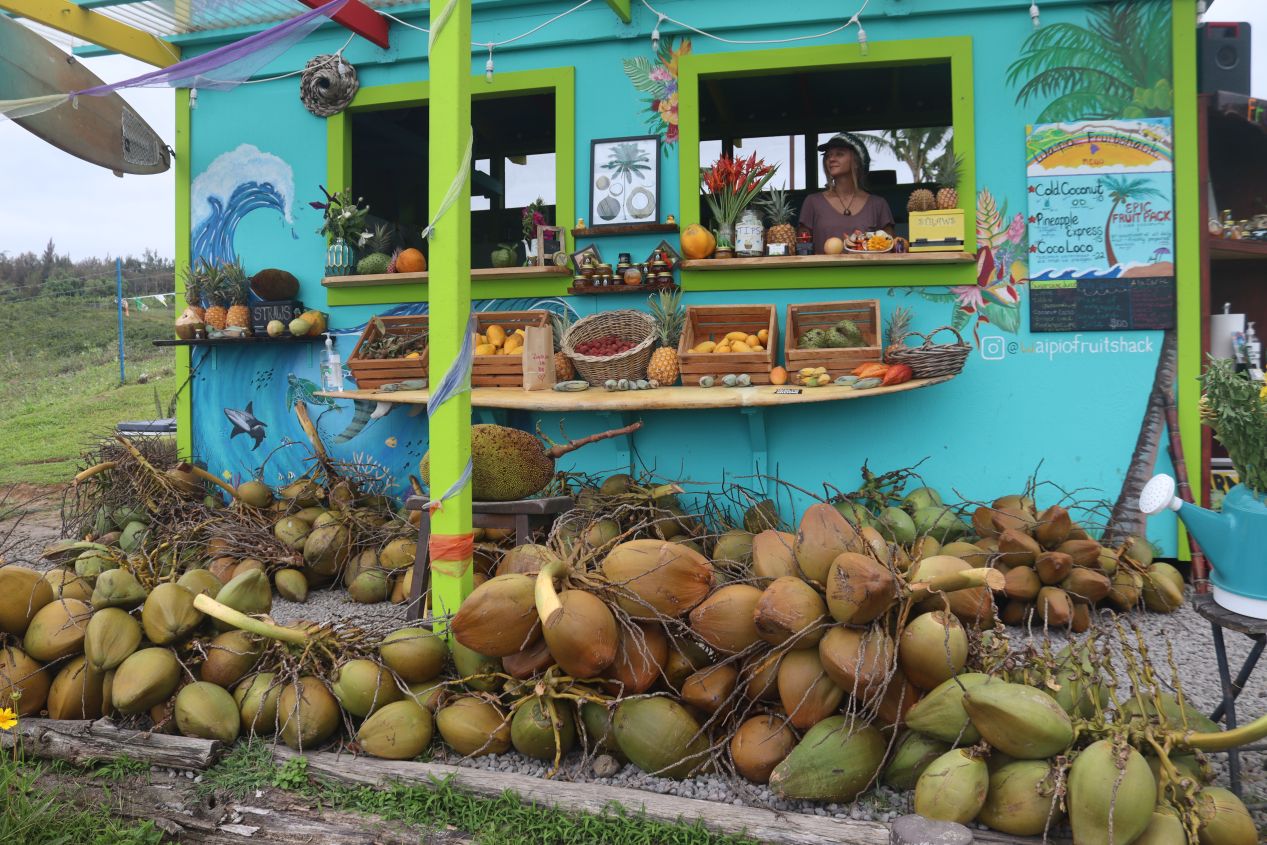


As another example of something that we spotted while driving along the road, we came across this local fruit stand and stopped to take a few pictures. The Waipi'o Fruit Shack featured locally grown coconuts and other tropical fruits, designed to cater to the tourists passing through the area as we were doing. They had a series of colorful signs and the staff behind the counter were incredibly pleasant when we stopped to chat for a few minutes. I remember that we purchased a fruit drink here and would have gotten more local produce if we weren't about to get on an airplane in a few hours with no way to transit the goods.

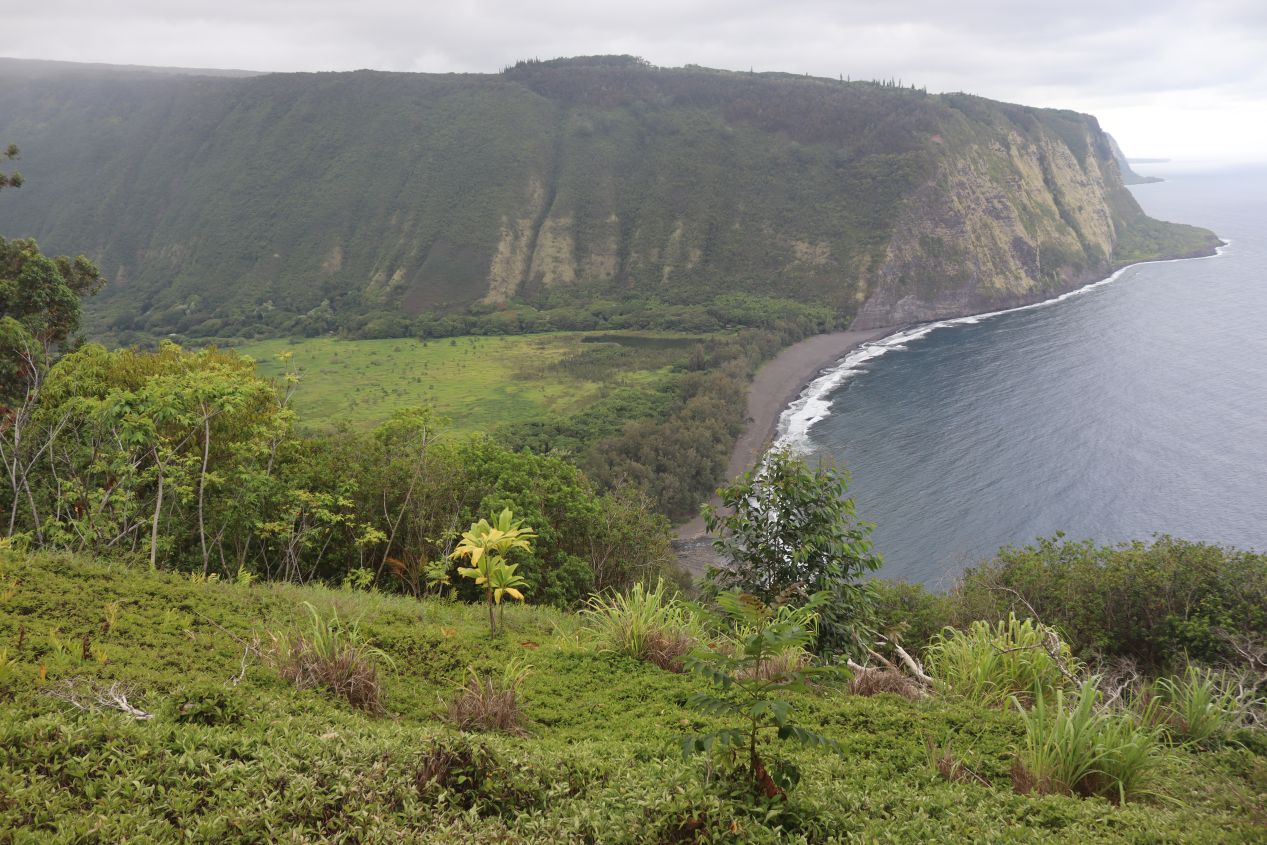


Finally we reached the attraction that we had been driving towards throughout the day: the Waipi'o Valley at the northwest end of the Hamakua Coast. This valley was a sacred spot for the native Hawaiian people, the residence location for many local ali'i (chiefs) in the centuries before the arrival of Europeans. The floor of the valley sits about 2000 feet / 600 meters below the surrounding landscape and it's only accessible by a single steep road which was closed to the public at the time that we visited. The shoreline along the Waipi'o Valley holds a black sand beach which would make it a popular tourist attraction if it wasn't so inaccessible for visitors. We were visiting the Waipi'o Lookout here which offered great views looking down into the valley while not being able to travel down there ourselves. In an ideal world, we would have paid for one of the horseback riding tours that takes most of the day to bring tourists down into the valley and then back up again via natural means. However, pregnant women are strong discouraged from riding horses so this would have to wait for another trip if we ever came back to the area. We had to be content with the views of this very rugged part of the coastline.

From the Waipi'o Valley we finished the rest of our drive around the Big Island by returning to Kailua-Kona in the late afternoon. We had a quick dinner at a Japanese chain named Daiichi Ramen before heading over to the airport where we could turn in our rental car and begin the journey home. Liz snapped this picture of the lights of the town of Kailua-Kona in the distance as our plane headed off into the dark clouds hanging over the ocean. This was a wonderful trip overall and a great "babymoon" destination before our little one arrived a few months later. I'm glad that we were able to see so many different things across two Hawaiian islands that neither of us had visited previously. If we go back to Hawaii again, we'd like to visit Maui and possibly Kaui since those were islands we didn't get to experience on this trip. Traveling to Hawaii is never cheap but we were glad that we were able to make this trip happen. Until next time, thanks again for reading along and sharing in some of these travel experiences with us!



